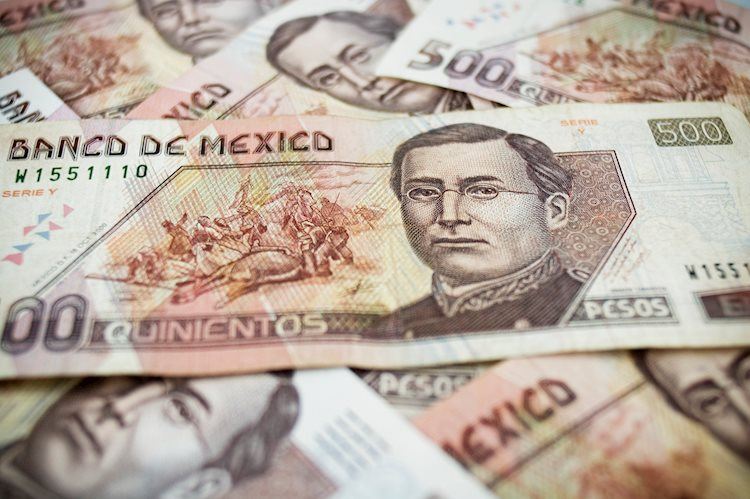Even before we reached the moon, humans were making plans to send people to Mars, and in recent years, the dream has seemed closer to becoming a reality. NASA plans to set foot on the red planet in the 2030s, while Elon Musk’s SpaceX plans to get there even earlier.
The difficulty is not just getting astronauts to Mars, but sustaining them once they are there; you can’t just grow potatoes in your soil – despite what Matt Damon would have you believe in the movie “Lost in Mars” .
With an atmosphere 100 times thinner than Earth’s, only half the amount of sunlight, no known accessible fresh water, and average temperatures of -81 degrees Fahrenheit (about -62 degrees Celsius), Mars is the most challenging environment in which humans have already planned to produce food.
A startup called Interstellar Lab believes it may have the solution. The Paris and Los Angeles-based company has designed a controlled-environment capsule system that could one day allow for cultivation in space.
“A multiplanetary species”
“Interstellar Lab is a child’s dream pursuit in the context of Earth’s climate crisis,” says CEO Barbara Belvisi. “At a younger age, I dreamed of becoming a multiplanetary species and living under domes on other planets, surrounded by plants.”
Belvisi spent a year with engineers at NASA AMES Space Portal before launching the Interstellar Lab in 2018.
Your Nutritional Closed-Loop Eco-Unit System, or “NUCLEUS” , is a modular structure comprised of nine cubic capsules designed to provide a nutritious diet for four astronauts during a two-year mission. Belvisi says it is capable of producing fresh microgreens, vegetables, mushrooms and even edible insects.
“The initial focus was on building a regenerative food production system to promote sustainable agriculture on Earth,” says Belvisi. “But I asked, ‘What if the technology we need to live in space could help us live more sustainably on Earth? ’ This is how the concept of advanced controlled environment modules for Earth and space was born.”
In 2021, the project was among the Phase 1 winners of NASA’s Deep Space Food Challenge, and in January of this year, NASA announced NUCLEUS among the 11 Phase 2 finalists.
NUCLEUS is now moving to a laboratory in Cape Canaveral, Florida to participate in the final phase of the challenge, with winners announced in April.

Farming in hostile environments
Inside the cubes of the NUCLEUS capsule, plants are grown in vertical cultivation systems, the method many scientists consider to be the best option for Martian agriculture.
Vertical farming is a soilless method of growing crops in a controlled environment, delivering nutrient-rich water directly to a plant’s roots. It can use significantly less water and fertilizer than traditional outdoor farming, and by continually recirculating water, it generates very little waste.
A large-scale example of this method in use can be found at the Emirates Crop One facility in Dubai, the largest vertical farm in the world. According to Crop One, their Dubai farm covers nearly 28,000 square meters of vertical growing space and produces 1 million kilograms of crops every year, including kale, spinach and arugula.
Deane Falcone, chief scientific officer at Crop One, says the principles can be applied to virtually any harsh environment.
“One of the fundamental advantages of this indoor grow is that we can put it in Dubai, we can put it in extreme cold – basically anywhere,” explains Falcone. And beyond water and artificial light, “it’s independent of resources.”
According to Falcone, if a vertical farm were to be used on Mars, water could be extracted from ice layers below the planet’s surface, while light could be provided by a system of mirrors to amplify the sun’s natural light or by using light bulbs. powered by solar energy and wind energy.

Falcone considers vertical farming in a fully fenced and controlled environment to be “the only option for farming on Mars”, although some scientists are researching growing plants directly in Martian soil. With vertical farming, “you control the hours of the day, you have a lot of influence over what the plant will do,” he says. “You can encourage flowering by simply changing the lighting time.”
Falcone points out that in weightlessness, such as during the expected nine-month trip to Mars, the most common form of vertical farming, hydroponics (growing in water), would not work.
“All large-scale farms on Earth rely on gravity,” he explains. “We’re growing on a tray of flowing water, (and) that water is held in the tray by gravity.”
It’s a problem found aboard the International Space Station, where crops are already grown with artificial lights. Seeds are planted in a nutrient-rich substrate inside sealed chambers that are spread with fertilizer pellets.
To combat weightlessness, astronauts must meticulously administer water to the roots of individual plants — a system that would not be feasible on the scale needed to feed an entire crew.
Falcone suggests an alternative method, known as aeroponics, which would deliver water to the contained roots using a mist.
Once on the surface of Mars, and under the influence of Martian gravity, a vertical farm hydroponic system could be used, housed in an environment like Interstellar Lab’s NUCLEUS.
But Falcone predicts that much more space will be needed. “The system has to be something you can rely on day in and day out to provide food,” he says.
“It can also be adapted to provide breathable air, as oxygen is created by the plants growing there. You would have to have a large-scale system to allow continuous production of food and additional products such as oxygen.”

“Only option”
The foods that could be grown in these systems and served to Martian colonists are envisioned in “Dinner on Mars: The Technologies That Will Feed the Red Planet and Transform Agriculture on Earth”. Agriculture on Earth), a book by Lenore Newman, director of the Food and Agriculture Institute at the University of the Fraser Valley, and Evan Fraser, director of the Arrell Food Institute at the University of Guelph, both in Canada.
“The key to sustaining life on Mars is an extremely intensive, closed-loop, efficient food system,” says Newman.
Fraser says that using LED light and a nuclear reactor to get power, “almost anything is possible in a Martian environment.”
“On Mars, you have to close the loop. You have to pay close attention to everything you are losing or putting into the system,” says Fraser. “It’s a good thought exercise to remind us what we could do on Earth if we really gambled.”
Fraser believes this type of technology can help us use Earth’s resources more efficiently and reduce carbon emissions.
“The vertical farming industry has done a remarkable job of reducing labor, water and costs such as land costs. They are achieving enormous productivity per square acre, per hour of worker and per liter of water used,” says Fraser.
When asked if they thought vertical farming was a good option for sustaining life on Mars, Newman and Fraser responded in unison: “It’s the only option.”
Source: CNN Brasil
Charles Grill is a tech-savvy writer with over 3 years of experience in the field. He writes on a variety of technology-related topics and has a strong focus on the latest advancements in the industry. He is connected with several online news websites and is currently contributing to a technology-focused platform.






